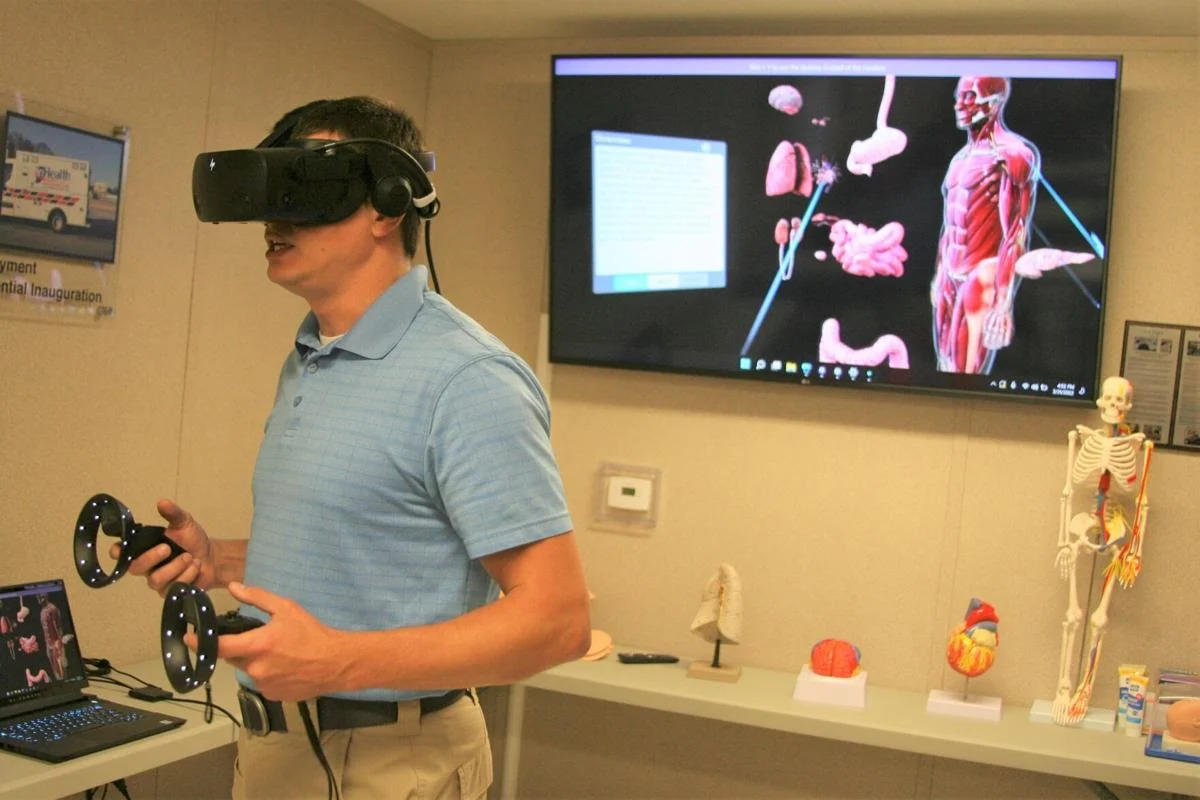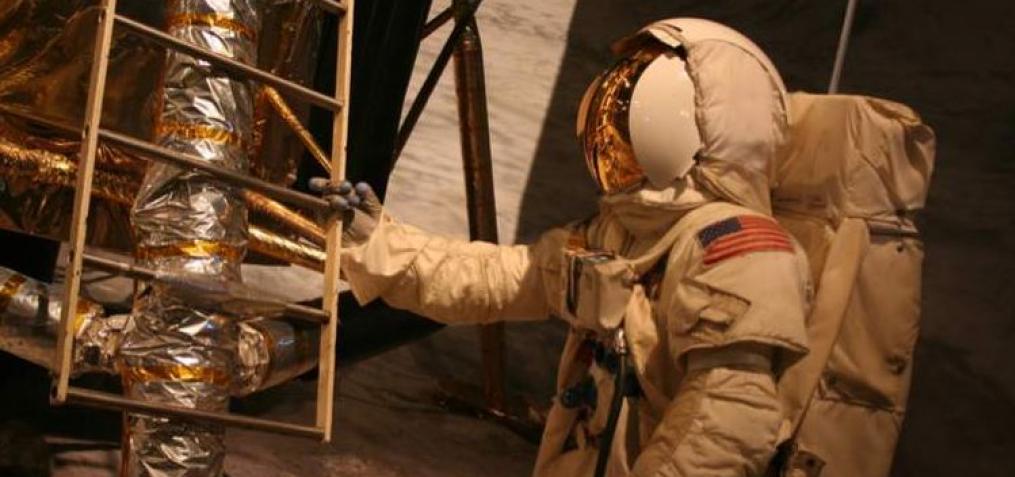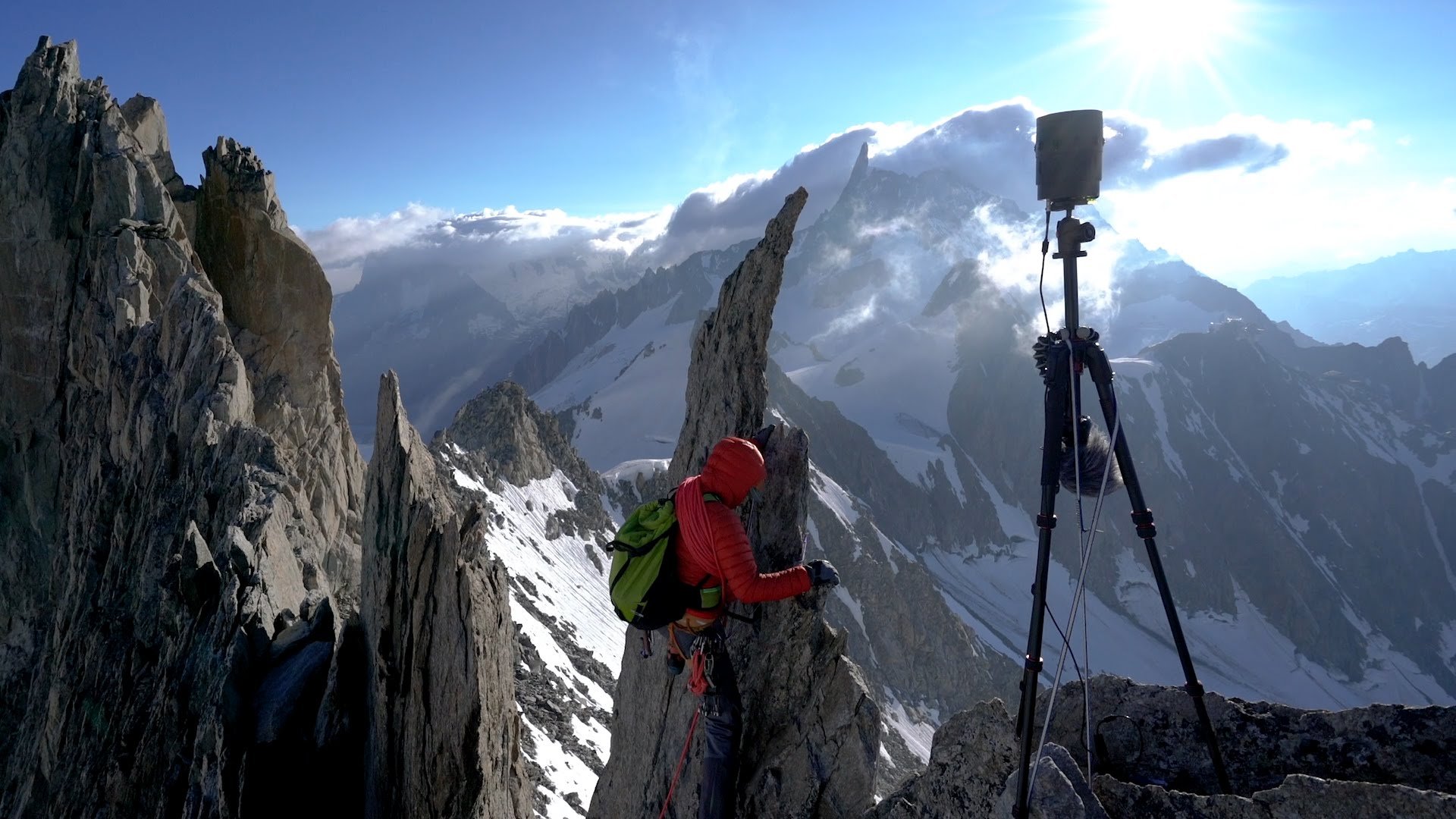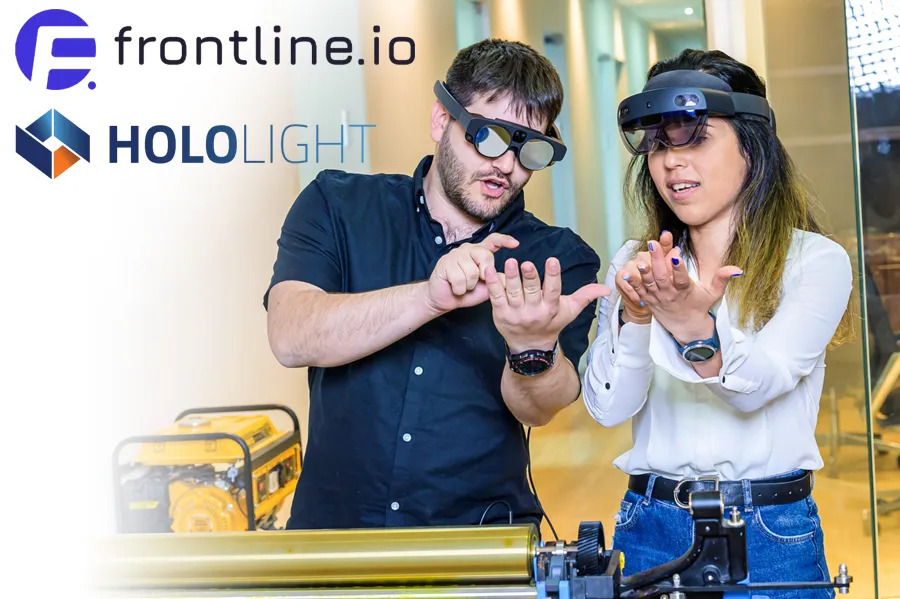VALPARAISO — A private ambulance service is not only trying to address decreasing emergency medical technician numbers, it’s using virtual reality to show future EMTs what they could experience in the field.
An accelerated EMT course offered at no charge by inHealth is using virtual reality in the classroom to bring real emergencies to life.
According to inHealth CEO Ron Donahue, “Our goal is to help with the EMS shortage in our Region. [The course] is 12 weeks instead of the typical 24, so they will be able to start making an impact quicker.”
The typical EMT course requires a minimum of 159 hours that covers curriculum and field work. This accelerated course has those same hours, but their weekly total has increased from eight to 16 hours.
A typical 24-week program was started at inHealth in August, with the accelerated program beginning in February and is now at its midway point.
From 32 candidates, 20 students were selected for the 12-week course, Donahue said. Those students, whose ages range from 19 to the 40s, are all from Northwest Indiana and are seeking a career in the health field.
Virginia Henderson, 42, a South Haven resident, is interested in moral reconation therapy, a behavioral therapy aimed at decreasing the likelihood of someone returning to substance abuse or alcoholism.
“This class has been great,” Henderson said. “With the experience I have, taking care of people, this class goes hand in hand.”
Bill Kane, primary instructor for the course, said the program covers different aspects of EMT work, including emergency response and hazardous materials.
„There’s a lot of hands-on training,” Kane added.
That covers spinal mobilization, CPR and AED training, bleeding control, and full cardiac arrests.
That’s where the virtual reality system can provide experiences not found in textbooks. Through this virtual system, students and instructors experience scenes ranging from a hospital setting to an accident with multiple injuries. Those scenes can also be enhanced to add explosions and other catastrophic events.
“Our first priority is scene safety,” Kane said. “Then we’re constantly reevaluating the scene for continued safety.”
The virtual system also takes students into the human body for anatomy and physiology. Pressing a button, students can stand inside a human heart, eye, or other organs. In this age of COVID-19, students can also witness a virus first-hand.
This system, Jeff Zielinski, chief operating officer for inHealth said, is “giving students the power if they were the leading EMT on the scene.”
This training will enable potential EMTs to be able to determine if a patient requires minor, immediate, or delayed care.
With students virtually stepping into a bodily organ, Zielinski noted, “You just can’t simulate this in a drawing. It’s something you can’t comprehend from a book.”
Knowledge of how body parts work, Kane said, can help first responders more accurately diagnose patients at the scene.
Donahue said that with this system “students are getting a better education. They see things in a different way.”
Donahue, who started inHealth five years ago, said EMT is a gateway into other medical fields, including nursing and doctors. EMT, he said, offers a “foundation for what it is like to be in medicine.”
The course also includes guest speakers on such topics as hospice, disaster management, and special needs patients. Portage Assistant Fire Chief Dan Kodicek recently spoke on opportunities and requirements within that community’s fire service.
Once students complete the course, they undergo testing from inHealth, followed by mandated state testing for certification.
Donahue cited several reasons for EMT shortages, including retirement and the pandemic forcing people into other careers.
Matt Anderson, 20, a student from Chesterton, loves the course.
“It’s a lot of fun,” he said. “For anyone getting into EMTs, I really recommend it.”
Planning a career as a firefighter, Anderson said “I’m getting a lot of information.”
Breanna Slatton, 25, of North Judson, plans to become a paramedic.
“The class has been good,” she said. “The community in here has been like family.”
Quelle:
Foto:
Jeff Zielinski, chief operating officer for InHealth, tests the virtual reality program for a simulated anatomy lesson for an accelerated EMT class offered by the Valparaiso primary ambulance service. The free class shortens the 24-week course to 12 weeks.Steve Euvino, The Times




